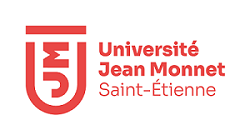Image processing for studying size segregation in bedload transport: detection and tracking
Résumé
Sediment transport in rivers and mountain streams remains poorly understood partly due to the polydispersity of particles and resulting segregation. Experiments in the tilted, narrow, glass-sided channel, at Irstea in Grenoble, France, were carried out to study bedload transport of bimodal bead mixtures. The behavior of the beads is recorded through video sequences. This work is about the development of image processing methods to analyse the obtained data. Firstly, we developed a tracking algorithm based on multiple model particle filtering (MMPF) which enables to track grains and deal with the complex dynamics with robustness [1]. This approach is based on mechanical dynamics and a non-linear observation model to handle miss-detections. It uses the technique of switching dynamical model and a graded observation through a detector confidence estimation. Secondly, we developed a method of image segmentation to study the infiltration of fine grains and its influence on the evolution of bed mobility [2,3]. This approach is based on a combination of morphological operations, gradient calculations and watershed transformations. Thanks to this method, we are able to analyse morphological evolutions, depth profiles, specific trajectories and bed slope transitions.
Origine : Fichiers produits par l'(les) auteur(s)
Loading...

